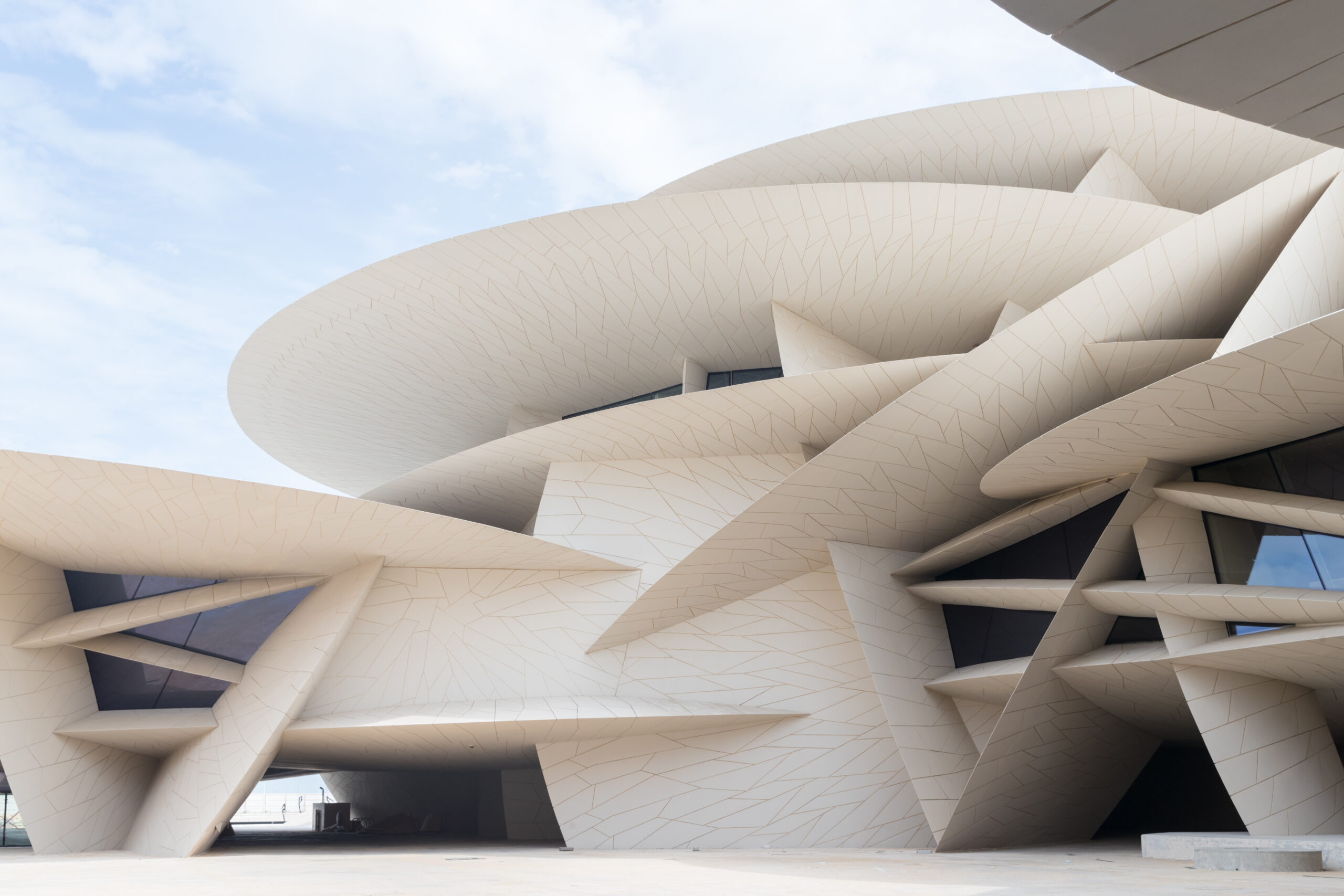The latest edition of “Architizer: The World’s Best Architecture” — a stunning, hardbound book celebrating the most inspiring contemporary architecture from around the globe — is now available. Order your copy today.
For the 2023 Vision Awards, Architizer has divided the Best Architectural Visualization category into three sub-categories: Photorealistic, Illustrative/Artistic, and A.I. generated. This last one has predictably raised eyebrows.
On Facebook, a reader named Milena Tos asked how someone could possibly win an award for an image created by an A.I. program. “What is going to be the criteria?” Tos asked. “Who picked the best image from 50 images that Midjourney created in a few minutes?”
Their comment ended with a provocation: “An architect who writes a prompt does exactly what clients do – give ‘prompts’ to architects. Is Edgar Kaufmann an author of Fallingwater?”
The implication was clear – and haunting. The specter of A.I. threatens to make architects irrelevant, as it does with so many other professions. Maybe not today… maybe not tomorrow… but still, the ax looms. Why make A.I.’s takeover easier by validating its visuals with awards?

Prompt: “Midjourney as it imagines itself.” Created by Midjourney v. 4. Chikorita, CC BY-SA 4.0, via Wikimedia Commons
Our Editor-in-Chief Paul Keskeys mused a thoughtful response to Tos’s questions, noting first that generating a great prompt is not as simple as it looks, and second that great A.I. images are often the result of “refinements” within the A.I. program. They’re not, in other words, just the first thing the program spits out. The winning A.I. visualization for the 2023 Vision Awards will likely be one created under the guidance of a person with a real sense for architecture.
Still, Keskeys conceded that A.I. has lowered the barrier to entry for architectural thinking. “I don’t think everyone is going to become ‘the architect’ of their own houses overnight,” he said, “but these tools do make ideation accessible to a far greater number of people, so it will be intriguing to see where that takes us…”
I agree with Keskeys that it will be intriguing to watch how architecture and other creative disciplines evolve now that A.I. programs like Midjourney exist alongside more familiar digital tools. I applaud Architizer for including A.I. generated images in the Vision Awards, as this type of work deserves critical scrutiny and analysis. It is nothing if not relevant and should not be ignored.
Nevertheless — and I cannot stress this point strongly enough — I loathe A.I. and wish that it did not exist. I also don’t think it’s actually “intelligent” for reasons that have been discussed widely by other writers. (By “A.I” here I mean these new neural network programs with the uncanny ability to mimic human creative labor. I’m not talking about Google Search or the calculator).
I don’t think I am alone here. I suspect that many people feel an aversion to A.I. but are afraid to express it. They don’t want to be seen as a reactionary or a Luddite, like the 19th century painters who feared that their skill set would be replaced by photography.
It is understandable that people want to avoid taking an old fashioned position and subsequently being swept into the dustbin of history. But this hang up is preventing us from thinking clearly right now. It must be abandoned for two reasons.

Prompt: “White castle with a magenta roof, two gardens in the front yard and a golden statue in the middle of the front yard, 4k, Renaissance.” via Midjourney v. 4 Mhatopzz, Public domain, via Wikimedia Commons
First of all, an accurate reckoning with history must begin by acknowledging that the painters were correct. Painting today has nowhere near the commercial application that it did 150 years ago, and as a result fewer people are learning how to paint. A whole sphere of human creativity withered on the vine, just as predicted. Luckily, it was replaced by a new, equally rich creative medium. You or I might not lament the advent of photography, but it is easy to understand why people did so in the past. Technology really can transform how people live, think, and create.
The second reason is more significant. This has to do with what these neural networks essentially are, that is, the specific processes by which they generate these uncannily humanlike texts and images. Indeed, the more one learns about how A.I. works, the more ominous it seems. If it changes us, it seems that this change could not possibly be for the good.
A.I. is nothing like the camera. It is nothing like the printing press, the Internet or any of the other “disruptive” technologies it is often compared to. Unlike these technologies, A.I. is philosophically insidious. It does not simply change the means by which people create, but undermines the very foundations of creativity itself.
To understand why, let’s go back to the camera. What is a camera? The camera is a tool for documenting objects in the world. A photograph does not, of course, provide a clear window onto reality but, like a painting, presents a necessarily limited, curated perspective, that of the artist or artists. In this, photography is the same as every other artistic medium; it is an imperfect tool for representing reality objectively that, through its imperfections, allows the subjectivity of the artist to shine through.
What is a Large Language Model like Chat GPT or an Image Model like Midjourney? These are machines that boil down a vast amount of data drawn from the Internet in order to perceive statistical patterns. They then use these patterns to predict likely outputs for user generated prompts. In essence, they show you what they think you want to see based on averages. As the artist Hito Steyerl writes in “Mean Images,” her brilliant essay for The New Left Review, “They represent the norm by signaling the mean. They replace likeness with likeliness.”

Prompt Unkown. City landscape generated by Midjourney v. 4. Artist: Kent Madsen. via Wikimedia Commons
Whose subjectivity is expressed in a work generated by A.I.? In one sense all of ours — a hive mind. Like a vampire, the machine feeds on the labor of millions of faceless artists, stripping away everything that is unique about their work. Even if one tweaks the prompts to create outputs that appear novel, they are still “mean images,” or statistical representations of some kind of common denominator. At best, they are emissaries from the collective unconscious. At worst, they are stereotypes, and indeed Steyerl draws a connection between the way A.I. image generation works and the composite portraits created by eugenicist Francis Galton.
In the 1880s, Galton created images of racial “types” by superimposing hundreds of faces on top of each other, blurring out the details and leaving only the common denominators, the features that members of these racial groups had in common. That is to say he created racist caricatures but gave them the imprimatur of science.
It is not simply Galton’s aim we should deplore, but his method as well. There is an intrinsic violence in the process of generalization, which is the process of flattening difference to conform with ideological presuppositions. And this is how these A.I. programs work — this is what they do, fundamentally and by definition.
In a photograph or drawing, the thing itself inevitably escapes, often to the chagrin of the artist. However, in an A.I. rendering, the thing itself is not even a relevant reference point. What you are looking at is not an interpretative view of an object or an idea, but a model of patterns in the data. An A.I. visualization of a building may look like a digital rendering created by an artist, but categorically it is a very different type of object.
A.I. is not creative and it is not intelligent; it is just the newest method for packaging human labor in the mystifying form of a commodity. As I see it, the most immediate danger with A.I. is not that it will take our jobs, although for many this is a risk. It is that we will become too used to using these programs and interacting with their outputs. Little by little, we will begin to think like them. Data will replace thought as our most familiar model of reality, our window onto the world.
To loop back to our starting point, Architzer is right to include A.I. images in its Vision Awards. This is a new species of image that we, as a society, are going to have to learn how to live with whether we like it or not. But readers are also right to have their suspicions. While it might be futile to try to stop technology in its tracks, it is foolish to pretend that the outcomes of technological progress are always benign. They aren’t, and this is one of the most philosophically troubling innovations yet.
The latest edition of “Architizer: The World’s Best Architecture” — a stunning, hardbound book celebrating the most inspiring contemporary architecture from around the globe — is now available. Order your copy today.
Cover image: Prompt: ” a low quality disposable camera fujifilm photo of a glowing female cyborg and glowing male cyborg standing motionless together staring into the camera dramatically in a 2000s nightclub, vintage rave lighting, motion blur” via Midjourney v4. Cameron Butler, CC BY-SA 4.0 <https://creativecommons.org/licenses/by-sa/4.0>, via Wikimedia Commons









